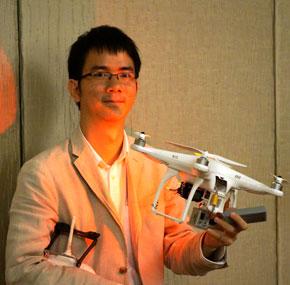Friday’s second and final day of Publish Asia delivered all delegates hoped for on key issues such as big data and native advertising, offered hope for the future of print, and left delegates up in the air… literally.
The usual problem: You’ve checked out of the hotel and are flying out within hours but there’s still a mass of people you want to catch up with, and several sessions you want to be at happening at the same time.
So I caught Doug Wills’ clarion call for the future of print, based on the London Evening Standard’s “do or die” decision to go free – without, he says, becoming a freesheet – but also the admission that the publisher’s future lies with digital.
Much of the story of what former KGB spy turned oligarch Alexander Lebedev was able to pick up for a couple of quid – a British pound for the loss-making Standard and another for the equally parlous Independent – and how the business was turned around by removing the evening paper’s cover price and apologizing to readers, is well known. From losses of £30 million a year, it has now turned three years of profit, although things are less rosy at the Independent and, of course, the new TV station the company launched only a couple of weeks back.
Lebedev “doesn’t interfere in editorial” and is happy to take a long view of publishing prospects. “We hope print will continue, but digital has greater potential,” says Wills.
And into the next room in time to hear Mediagene chief executive Motoko Imada relate the company’s three-years experience of content marketing. Native ads, including those on Gizmodo, are promoted by buying display space on third-party sites, but the company retains control of its own data. A management platform collects, analyses and divides audience data and is “a win-win for client and audience”, Imada says.
On a similar theme, Cassian Cheung, chief executive of Apple Daily publisher Next Media, told how print circulation of the paid-sale daily was falling as commuters turned to mobile devices for news in a city which has 238 per cent mobile penetration, twice that of the USA.
Next’s great success is its inhouse-produced 3D news animation which helps the publisher to six million app downloads, 1.2 billion pageviews a month and 465 million video views. Eight million unique devices are connected in a month, not bad for a population of seven million.
Cheung says the priority was to deliver audience, but collecting and handling the data has equipped the publisher to serve location-based offers using its own “heat map” based tracking software. Games are also popular, with a partnership delivering HK$100 million in gross revenue in six months.
“Big data is about being small,” says Cheung. “Understanding individuals and allowing a one-to-one relationship between reader and publisher; we never ask for the user’s identity, although we know them intimately.”
The focus on audience engagement delivered Storyful founder Mark Little and Scott Lamb, Buzzfeed’s international vice president, while Crowdynews’ chief executive Jeroen Zanan was in the exhibition area, along with a mass of other mostly digital-focussed providers. Atex and new US conglomerate Newscycle were curiously at opposite ends of the space.
The afternoon delivered the observations of Bonnier’s Jacek Utko on design and usability, and FT publisher Angela Mackay’s off-pat analysis of the 150-year-old publisher’s success: “We’ve come through the crucible of change in rude health and with strong profits,” she says .
Revenues from content exceed advertising, FastFT is addressing mobile growth, 7.5 million users are an indication of the extent to which the publisher is “catching up’ on social media and even print is profitable, but the pace is “ratcheting up” constantly and Mackay wants to know what’s next: Google glass or a ‘behind ear’ device, perhaps, she ponders.
As do we all: One piece of technology delivering a changed viewpoint for publishers is the drone and – in addition to received wisdom on the subject – one delegate got to take one home.
Bangkok Post editor-in-chief Pichau Chuensuksawadi and photo producer Sithikorn Wongwudthianun. introduced the latest tool at the disposal of photojournalists. One benefit is that when event organisers make attendance claims, camera angles are possible which show the real picture, Wongwudthianun says.
Berita Harian digital editor Puad Ibrahim will be able to put the theory into practice when he gets his prize home – courtesy of CCI Europe – and promises to share the booty with fellow members of the SPH unit.
Peter Coleman
Pictured: Pichau Chuensuksawadi with a drone
On our homepage: Motoko Imada, chief executive of Japan’s Mediagene
















Comments